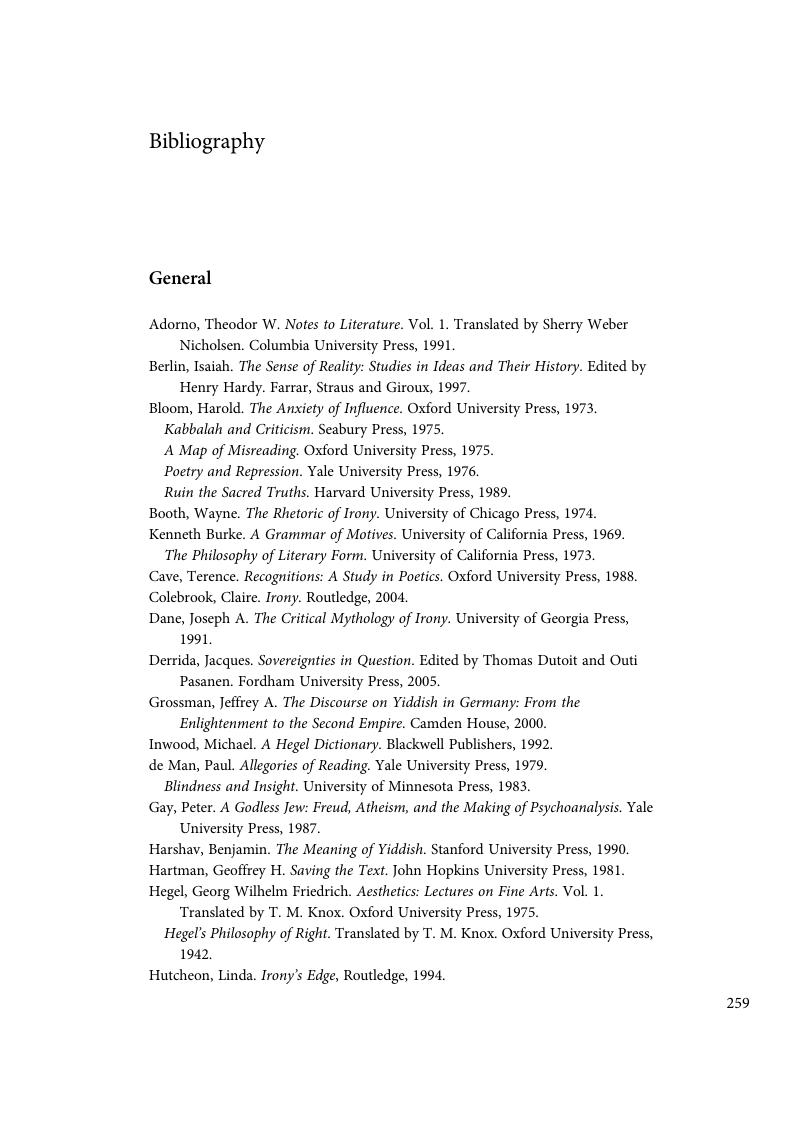Book contents
- Varieties of Musical IronyFrom Mozart to Mahler
- Varieties of Musical Irony
- Copyright page
- Dedication
- Contents
- Musical Examples
- Praeludium
- Preface
- 1 Irony as a “Master Trope”
- 2 Varieties of Musical Irony
- 3 Mozart’s Figaro
- 4 Heine and Irony in the Lied Tradition
- 5 The Jewish Face of Mahlerian Irony
- Postludium
- Bibliography
- Index
- References
Bibliography
Published online by Cambridge University Press: 25 May 2017
- Varieties of Musical IronyFrom Mozart to Mahler
- Varieties of Musical Irony
- Copyright page
- Dedication
- Contents
- Musical Examples
- Praeludium
- Preface
- 1 Irony as a “Master Trope”
- 2 Varieties of Musical Irony
- 3 Mozart’s Figaro
- 4 Heine and Irony in the Lied Tradition
- 5 The Jewish Face of Mahlerian Irony
- Postludium
- Bibliography
- Index
- References
Summary

- Type
- Chapter
- Information
- Varieties of Musical IronyFrom Mozart to Mahler, pp. 259 - 263Publisher: Cambridge University PressPrint publication year: 2017



